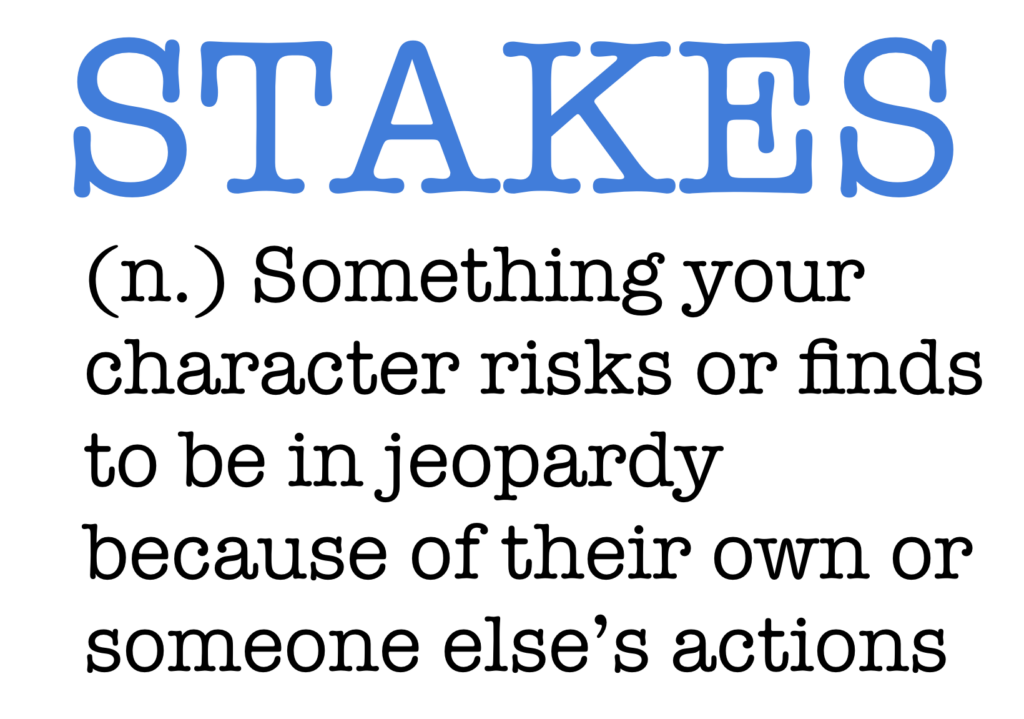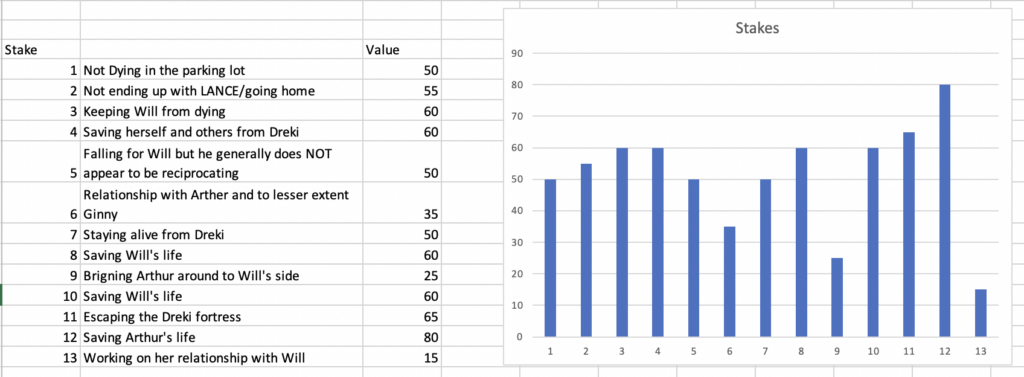Are the stakes of your story enough to get the reader turning the page?

My definition of stakes is something your character risks or finds to be in jeopardy because of their own or someone else’s actions. Basically, the stakes are the external or internal problems that are vexing our characters. Stakes are one of those things that build tension and keep the reader turning the page of our children’s books so you want to give readers stakes they can really sink their teeth into.
However, your stakes need to start small and get big.
You don’t want to start with the world burning from the very first page. Instead we want our stakes to escalate and get bigger as the story goes on. How do we make sure our stakes are doing that?
Well, we can actually graph them out and see. You can use a dot plot, a line graph, or a bar chart — basically anything that shows progression. On the x axis we’re going to put the stakes and on the Y will put how big of an impact the stakes has on the story or character using a scale from 0-100. A really high 100 stake is some sort of McGyver style stake. This is where you have ten seconds to defuse a nuclear bomb with a safety pin otherwise you and the State of Kentucky are going to die. An exceptionally low 1 value stake is where you need to remember to buy another bottle of multivitamins when you go to the grocery today, because you only have a two week supply left. Not exactly dire. Then you take your stakes, use your gut to assign them an impact value, and graph it.
Here’s an example of what you want your stakes to look like. Does every single one have to rise? No, but you want the overall progression to be rising. These are the stakes from my book Pendragon’s Heir.

So as you go into your writing or revising of your children’s book, keep your stakes in mind. I will.
*Note: the idea of dot plotting or graphing parts of your book is not original to me. I once learned about the idea of graphing parts of your book at an Austin SCBWI retreat at some point. The thing is, I can’t remember who taught it or whether or not they had applied it to stakes or to character arc and then I applied it to stakes. If anyone knows who (or what) I’m talking about, let me know.







You must be logged in to post a comment.